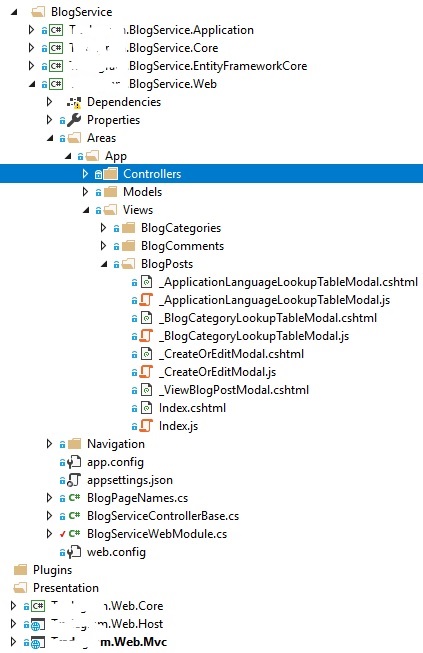Activities of "hitaspdotnet"
Some issue, Is there any update?
Configuration.EmbeddedResources.Sources.Add(
new EmbeddedResourceSet(
"/Areas/",
Assembly.GetExecutingAssembly(),
"ProjectTest.BlogService.Web.Areas"
)
);
ASPNET Zero 5.3
My project is MVC Core.
<a class="postlink" href="http://localhost:62114/App/BlogCategories">http://localhost:62114/App/BlogCategories</a> response this message:
An unhandled exception occurred while processing the request.
InvalidOperationException: The view 'Index' was not found. The following locations were searched:
/Areas/App/Views/BlogCategories/Index.cshtml
/Areas/App/Views/Shared/Index.cshtml
/Views/Shared/Index.cshtml
Microsoft.AspNetCore.Mvc.ViewEngines.ViewEngineResult.EnsureSuccessful(IEnumerable<string> originalLocations)
If your rows is +1000 and you still want keep that, the best way for keeping that columns is changing "int" to "varchar" and use TypeConverter for new entries . You can create a excitation for that.
Hi I think you can create a Db backup and edit your query file then attach that again. Or use VS SQL Object Explorer right click on target table then click "View Code". Then change that column type. If your data is +1000 rows I'm not sure for this solution.
Hi.
<cite>alper: </cite> Is it Angular or MVC?
It's MVC. Navigation source place's is my wrong? I created this using ABP documents. I asked a question
<cite>csbeginner: </cite> Can I add a menu without permission required in the main menu? If yes what's my wrong?
but after waiting for 7 hours and refreshing topic page's I resolved a link not YES or NO.
[https://www.learnentityframeworkcore.com/configuration/fluent-api])
In version 2.0 onwards, this is accomplished by creating classes that implement IEntityTypeConfiguration<TEntity> and adding the fluent configuration code to a Configure method
<cite>alper: </cite> hi
maybe you should check this tutorial: <a class="postlink" href="https://www.tutorialspoint.com/entity_framework/entity_framework_fluent_api.htm">https://www.tutorialspoint.com/entity_f ... nt_api.htm</a>
and official Microsoft doc: <a class="postlink" href="https://msdn.microsoft.com/en-us/library/jj591617(v=vs.113">https://msdn.microsoft.com/en-us/librar ... 7(v=vs.113</a>).aspx
MSDN link is broken and first link tutorial is not covered by EF Core 2 because EF core 2 not generate join table. [https://github.com/aspnet/EntityFrameworkCore/issues/1368]) We need create that manually. Is can be hard for a project like eShop. Using fluent api in DbContext class's makes a ugly code if we have +10 tables. So what the best way?
[quote="alper"][list] Thank you for helpful links Is there any suggestion about fluent models builder? I think the Fluent API provider and interface's can be a good feature for ABP Framework. I don't know! Maybe I'm wrong
In code first approach we will first create entity classes with properties defined in it. ABP Entity framework will create the database and tables based on the entity classes defined. So database is generated from the code.
Advantages 1.You can create the database and tables from your business objects. 2.You can specify which related collections are to be eager loaded, or not be serialized at all. 3.You can use amazing Microsoft Entity Framework features in your entities 4.Database version control. 5.Good for small applications
Database First Approach Disadvantages
1.Using an existing database to generate a .edmx model file and the associated code models results in a giant pile of auto generated code. 2.When you need to add any functionality to generated model you have to extend the model class generated.
In the ABP framework everything is clean and easy so you can migrate from DB first to Code first easily. Use amazing ABP Zero RAD tools for generating your entities and enjoy.
<cite>alper: </cite> can you explain in details with showing some concrete samples.
I have a featured namespace named "Store" and they have some child namespace like "Catalog, Customers, Sales,..". So my entities like "Categories, Products, etc" should be in that main menu for progressing permissions and useful UI navigation. But all of my entities just can going to root menu or administration menu. So I need confirm my host permission and angular navigation per entity.
